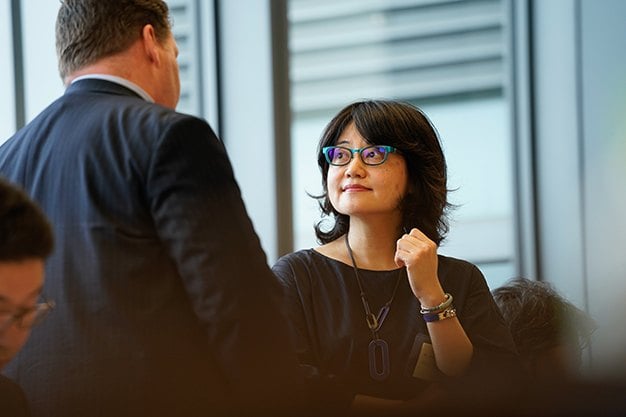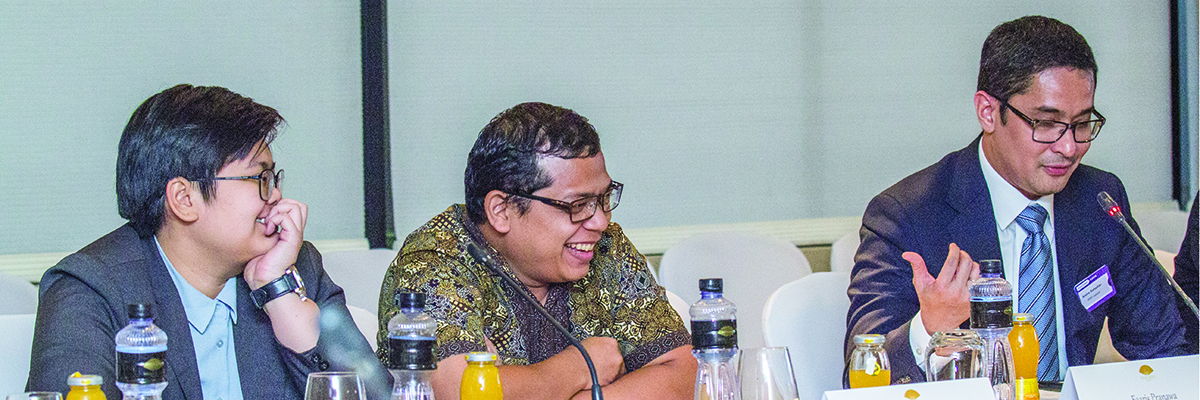Nowhere is there a more striking example of a global trend towards ageing and falling populations than Japan. Japanese government figures from 2013 put the median age at 45.9, with a fertility rate of 1.43 – below the 2.04 required to maintain population levels. By the end of this century, Japan’s population will have shrunk to 84.5 million, down from 127.5 million in 2017, according to the United Nation’s World Population Prospects 2017 report.
Especially sobering is Japan’s ‘potential support ratio’, or the number of working-age people per retiree. The UN divides the number of people aged between 20 and 64 in each country by the number of over-65s, revealing Japan’s ratio to be 2.1 – the world’s lowest.
Of course, Japan is not alone. Widespread sluggish and slowing population growth means that the engine for the global population will not be the most developed and prosperous countries, but less developed regions. Africa for example, where youthful populations, falling infant mortality rates and rising life expectancy are causing a surge ahead in the population stakes, according to projections in the UN report.
The same report details a global rise in the number of people over the age of 60, most markedly in Europe, where over-60s number 25%.
Asia largely follows this trend. Although predicted to be the second largest driver for future population growth, this growth will slow over time, while the proportion of its population aged over 60 will rise from 12% in 2017, to 24% in 2050, predicts the report.
But for frontrunners, like Japan, this means not just a ticking social security time bomb and potential future tax rises, but many challenges for businesses in the here and now.
A disappearing workforce
The impact on the workforce is most visible in customer-facing sectors, such as retail, or the service industry.
‘What you do notice in Japan is that there’s a higher penetration of people in their 60s and early 70s active in the workforce in service industries. I don’t think they work full-time, because of the social security system, but, for example, the lady that cleans the common areas and the bathrooms, she’s probably 70 years old,’ says John Vigman, general counsel for Japan at Veolia.
Nobuo Kawakami, country legal counsel for Japan at pioneering technology leader, ABB, believes that changing generational aspirations are exacerbating the issue:
‘In Japan, one in every five people is within a decade of retirement. At the same time, the population is declining, and the younger generation do not want to perform monotonous or strenuous jobs or work in harsh environments. In most of the cases, these jobs are not attractive to people who have grown up in a digital world, also they often have lower compensation levels,’ he explains.
‘The service sector needs to evolve its business model. 24/7 business operations are already not sustainable in some areas due to worker shortages, so they’ve been forced to decrease operation hours from early morning to late evening versus 24/7.’
‘In at least three sectors the response has been to start hiring foreign workers.’
The problem is most pronounced in rural towns, where, stripped of young people lured away by the bright lights of cities like Tokyo and without an influx of foreign students, older people are left to keep things afloat. As a result, sectors like agriculture have been particularly hard hit – a 2015 census conducted by the Ministry of Agriculture, Forestry, and Fisheries put the average age of a farmer at 67.
Keep active and carry on
Not all sectors have such a conspicuously greying workforce. But older workers could be set to become a fixture at many workplaces, despite the traditional Japanese workplace model of mandatory retirement at 60.
With Japan’s notably high life expectancy meaning that people can expect to live into their 80s, Japanese people often want to work longer. A 2014 government survey of over-60s, quoted by leading Japanese think tank Nomura Research Institute, showed that more people than in any other group stated that they would like to work for as long as possible.
‘We hired a former employee who was over 60 to help out on a part-time basis (against some internal resistance) and I would have liked him to work more, but because he’s already receiving his government pension, apparently he’s limited in the number of hours he can work,’ says Vigman.
‘I think that’s unfortunate. In other countries you can work and you don’t have to pay the same amount of tax on income received, but here it would apparently affect his overall pension from the government.’
In many cases, the desire to work post-retirement is down to the importance of continued contribution among older people, and the sense of belonging that this fosters.
‘A 60-year-old or a 65-year-old – these people are actually very, very young,’ says Claire Chino, former general counsel of Japanese trading house Itochu.
‘Japan enjoys longevity and there are some very capable people, physically and mentally. I think one issue is how do you actually utilise retirees who are still very active? I was told that when it comes to volunteering, the largest number of volunteers by age bracket and also by gender, are actually men in their 60s and 70s.’
Equally, research has shown a greater willingness among working-age people to work with older people. Nomura Research Institute surveyed almost 2,000 people about their attitude to working with over-65s, and more people reported either being pleased to work with older people or ready to work them with under certain conditions, compared to robots, consultants or foreign workers.
However, despite the Japanese workplace being one of long-term employment – with a wage system based on seniority and a requirement that companies that set a retirement age of below 65 must have a continued employment system to ensure workers are protected throughout their working life – in practice, if they work beyond retirement age, many are forced to relinquish their former title and salary. The government has reportedly made noises towards raising the retirement age, which many may welcome, given the fact that in 2013 it committed to gradually increasing the age at which retirees can claim a state pension from 60 to 65 by 2025. More recently, reports suggest further plans to up this to 71, raising the spectre of an income gap.
Open for guests
Immigration is a contentious topic within Japan, a country which is often said to be 98% ethnically homogenous. But past opposition to immigration seems to be fading, not least among the government, which earlier this year indicated plans for a new ‘designated skills’ residency status for foreign workers in agriculture, social care, construction, hotels and shipbuilding, according to a June 2018 report in the Financial Times.
According to an earlier report in March, in The Japan Times, statistics released by the Japanese Justice Ministry show that foreign nationals resident in Japan grew 7.5% during 2017.
In big cities at least, foreign labour does appear to be visibly on the rise.
‘In at least three sectors (healthcare, retirement homes and convenience stores) the response has been to start hiring foreign workers. The headline countries supplying this labour are the Philippines, Nepal and China, but there are also a respectable number of younger workers from Western countries, including the United States,’ says Chris Drake, former APAC general counsel for a European investment bank, now managing partner of Tokyo law firm Drake Partners.
In Nomura’s predictions, robots feature heavily.
‘I live near Temple University Japan Campus and the closest convenience store is a Lawson, owned and operated by a young Japanese couple. Their two primary support staff at the store are both bilingual American girls, who seem to have settled into a permanent job routine. You would never have seen this even five years ago,’ says Drake.
Nevertheless, even under relaxed conditions, foreign workers will not be allowed to stay permanently, or bring their families over.
‘I think what the Japanese are trying to do is manage immigration so as not to disturb the overall culture. [Foreign workers], unless they’re on some sort of working visa for a limited amount of time, tend to learn the language and adapt, because you have to,’ Vigman explains.
‘In Japan they have the concept of muragaisha or ‘village mentality’ – it’s the idea that you stick together as a village. In my wife’s hometown, every month or twice a month, they all get together and do various civic duties that one would expect from the municipality. There’s no law that requires them to have to do it, but they would never not do it for fear of sticking out. My wife has even travelled back 160 km to her hometown to replace her mother when she is not able to assist in these duties.’
Challenging old mores
Demographic changes with a shrinking workforce and domestic market, mean that old mores are being challenged, bringing opportunities for new models. According to a 2017 article in Nikkei, foreign acquisitions by Japanese companies rose by 30% in 2016, to a record 10.91 trillion yen ($97.9 billion).
‘For several years now, larger, more established Japanese companies in the “mature” local market have realised they have to look overseas if they want to continue to grow their business – and they are getting better at it,’ says Drake.
The potential for e-commerce remains great too, with 48% of older people over 60 owning smartphones in Japan, including some developed specifically for older people. However, the utilisation rate of e-commerce is still slow – under 20% according to Ai Sakata, a member of the ageing industry and senior workforce research team at Nomura Research Institute.
‘Some older people can use e-commerce but most of them cannot reach that level. They can only do telephone or text or email or easy SNS apps,’ she explains.
‘But we expect that future older people, who are getting used to technologies, will have more versatility to start e-commerce. We think it’s not so far in the future that older people will start to do shopping online.’
Do the Robot
Perhaps the most arresting departure from old mores in the Japanese workplace is the introduction of non-human workers, as technology companies step into the gap left by worker shortages.
ABB, the Swiss robot manufacturer, has seized the initiative in Japan, diversifying its customer base to address labour shortages in the food and beverage sector
‘In the past, the majority of ABB’s customer base for robots included large companies such as the major automotive manufacturers and their first-tier suppliers. However, many other industries, driven by both shortages of workers and global competitiveness, are increasingly turning to robot automation. To support these new robot users, ABB takes a strong solutions approach, leveraging both our industry know-how and strong digital offering. This is about much more than simply selling robots,’ says Kawakami, ABB’s Japan legal counsel.
Robot Lettuce
The agricultural sector, which has been hard-hit by falling numbers of farmers, and a drop in production and the food self-sufficiency rate, is also looking to innovation to solve the issues of a changing demographic. In one particular case, innovation has taken the form of automation.
A spokesperson from Japanese vegetable-producer, SPREAD CO., Ltd, explains the company’s ground-breaking new model for producing lettuce – an automated, vertical lettuce farm – and the company’s vision for the future in Japan and beyond.
‘When considering global expansion and constructing multiple farms abroad, we thought it was important that workers from various backgrounds and with various sets of values were able to create a product of the same quality. Therefore, we implemented an automatic system to standardise the working process and quality of the product.
The vegetables are grown in water – hydroponics – with only LED and fluorescent lights, in an environment where temperature and humidity are strictly regulated.
In terms of hygiene, automation reduces risk factors associated with contact between workers and products. Also this technology allows workers to focus on higher-level tasks, and therefore attracts younger people to agriculture. This is important in Japan, since the average age of farmers is 67.
Japan has limited agricultural land, and farming in this way enables highly efficient and stable year-round production. It is resilient against the influence of weather and climate change, as Japan is prone to natural disasters such as typhoons and heavy rain. It is free from pesticides and risk of contamination, and it produces a reduced carbon footprint through a shortened supply chain and reduced waste. It is also replicable anywhere.
In Japan, falling population has caused a decrease of farmers and production, and a decrease of the food self-sufficiency rate. By introducing this sort of innovative agricultural solution, we can both solve issues of productivity and bring a new generation of workers to sustain agriculture in Japan – and decrease Japan’s reliance on imported food moving forward.
Early on there were challenges in making the business profitable, due to a high learning curve for the operations, the novelty of the technology, and the fact that vertically farmed lettuce products had not been sold previously in Japan. Making the business as profitable as it is today was a significant challenge that took several years.
In terms of the product and concept, at first customers have been suspicious of this kind of new product and how it’s produced. However, in-store tasting helped attract a core base of customers that lasts to this day.
Currently Japan is our biggest market and we sell our products at over 2,400 outlets across the country. We aim to expand our business overseas, particularly North America, Europe and the Middle East.
Domestically, we are aiming for a 10% share of the Japanese lettuce market by utilising a franchise/ownership model to establish 20 facilities and a daily production capacity of 500,000 lettuce heads (50 tonnes). Globally, we plan to cooperate with local companies in each country and provide technology and support for distribution and sales. We will develop and propose business schemes applicable to each area.
At the moment, we have one lawyer in our in-house team. There are no significant regulatory challenges.
We are keen on developing new, innovative technologies in-house at SPREAD. Therefore, strategy for the protection of intellectual property is becoming an urgent necessity.’
‘The food and beverage sector, which has many companies across Japan, is a good illustration of this challenge. Normally speaking, these are very small operations with many part-time workers. In extreme cases, we see some processes where workers are in their 60s and 70s who are retiring, and the operations are facing difficulties in finding replacement workers.
‘For example, at some factories foods are picked and placed on a moving conveyor by very efficient robot automation solutions, but then manually packed by people – which is often repetitive and boring work. These same robots can be flexibly programmed with ABB software to take over the packaging, taking out the products from the trays, putting the products in line for post-processes, boxing the products in cartons for shipping, etc. The robots can even use vision systems and sensors to check the quality of the food. The end result is more sustainable operations with less need for people to do unattractive or poorly paying jobs.’
He adds: ‘At the same time, robots can help improve workplace safety without compromising productivity. In the past, robots have always been separated from people by safety fences. The emergence of collaboration automation is changing this constraint.
‘Some robots, such as ABB’s YuMi® are designed to work side by side with people on shared tasks such as small parts assembly automation, while keeping workers completely safe. ABB’s SafeMove2 software allows people to work in closer proximity to robots, while restricting the robot speed and position to keep the worker safe. Both YuMi and SafeMove2 help improve manufacturing flexibility to make more diverse products and remove the constraints of fences from factory floors. Workers are therefore more productive, often in a smaller factory footprint.’
While technology also continues to advance, it is also important to have innovation in business models, too. For example, ABB has done careful risk analysis and adjusted its contract terms to accommodate the different commercial needs and financial resources of smaller manufacturers.
ABB is also looking to digitalisation to provide further opportunities to help its customers realise the full potential of its so-called ‘Factory of the Future.’ A good example is the company’s ABB Ability™ Connected Services, where ABB remotely monitors the health and performance of more than 7,000 robots today in some 750 factories to help prevent breakdowns.
‘These advanced, connected services also help us manage the ageing population challenge. Many factories in Japan have workers with 30 or 40 years of experience who are close to retiring. Their experience and knowledge of solving problems is invaluable,’ says Kawakami.
‘But once they leave the workforce, we have to keep our factories running and productive. By connecting robots to advanced, cloud-based services, we can harvest their knowledge and real-time information to identify and correct breakdowns before they even occur.’
New markets
Even away from the environs of industry and production, Japanese people are beginning to see automation and robots pop up in their everyday lives.
‘You see it in the hotel industry – you’re getting robots able to take your check-in reservation,’ observes Vigman.
But aside from replacing human labour, some predict that Japan’s ageing population could generate whole new markets for businesses. Not only are people getting older, they are living longer – and healthier. Longer working lives mean a prolonged period with income to use for consumption, and Nomura predicts a prolonged ‘active period’, in which people are able to manage without assistance or care post-retirement.
Womenomics
Demographic changes have also turned the spotlight on the role of women in the workplace, with the government voicing support of getting women into the workplace with much fanfare – a movement nicknamed ‘Womenonomics’.
‘One of the major reasons the population is decreasing is because couples are not having children. Men and women are not getting married or they are getting married at a very late stage, and women are choosing to either not have any children or fewer children – they are choosing career over family,’ says Claire Chino, president and CEO of Itochu International.
‘But there’s still the expected role of mothers and women as being the primary care taker of children. Japan is a country that is very, very generous in terms of maternity leave, much more so than, for example, in the US. But the downside of that is that it actually embeds this notion that it should be the mother who raises the children.’
The government has promoted work-life balance in an attempt to quell this perceived choice as part of its many measures to tackle the gender equality divide. It has also urged disclosure of information regarding the appointment of women in listed corporations and has set targets for the advancement of women to managerial and board positions.
The corporate world is doing its own work in this regard, with many large companies offering internal diversity initiatives. And the message is filtering externally too. In 2017, the Government Pension Investment Fund for Japan – the world’s largest pension fund – announced its endorsement of the MSCI’s ‘Japan Empowering Women Index’ (WIN) as a benchmark in its investment strategy.
‘It’s ironic, but the falling population, I think, has made us more aware that diversity is important and, diversity, by the way, is not just about increasing the numbers, it’s bringing more people with different ideas to the table – which ultimately is a good thing for the company, to get away from old mores,’ says Chino.
There is huge potential for ICT solutions to further extend this period, giving rise to a sector called ‘gerontechnology’ – the fusing of ‘gerontology’ (the study of age) and tech.
In Nomura’s predictions, robots feature heavily, for example, mobile servant robots. Sakata also foresees the development of communication robots to help people to hospital appointments by using a ride-share system, assist in grocery shopping via e-commerce, remind them to take their medication, or even just to chat with family members living far away – all of which allow people to stay independent – and happy – for longer.
There are challenges, however. Many of these products seem to be developed by hi-tech start-ups, which lack the marketing channels that allow bigger, more established companies to reach older people. Nomura suggests that start-ups collaborate with bigger companies in order to reach their target market.
‘Big companies can adapt good start-up skills for development, and start-ups can use the channels of big companies to reach older people. Distributors, telecommunication carriers and also infrastructure companies that deliver gas or electricity, have channels to older people, and can be a platform to collaborate with start-ups, and prepare the environment for start-ups to develop and test new technologies,’ says Sakata.
For those with the skills and vision to capitalise on the transforming demographic, businesses in Japan – and those elsewhere, in the many countries whose demographic patterns are following suit – there is opportunity aplenty to enjoy new markets – and stave off future economic woes. And in an embryonic regulatory environment, their legal staff will be well positioned to contribute to shaping a new future.
British academic Lynda Gratton, who wrote The 100-Year Life, a bestselling tome that inspired the creation of a whole new Japanese government body to prepare for the fact that future generations will frequently reach the age of 100, puts it thus:
‘[Japan] is a beacon on how technology can support long productive lives. This creates real opportunities.
Building upon this strong platform will require a different perception of what makes a great life – both at work and at home. The outcome is nothing short of a social revolution affecting everything. The difficulty is that because so much is changing, the role models of the past are of limited use. The career paths and life decisions that worked for earlier generation won’t necessarily work now. So now is the time to seize opportunities.’






 ‘As the Gender Champion for Eversheds Sutherland International, I am closely involved in our efforts to boost diversity, such as our new female career development program, our target for 30% of partners to be female by 2021 and our leadership team taking direct responsibility for hitting the target. As an employment lawyer I also see many of our clients responding positively to gender balance challenges. It really does feel like a new momentum has been reached and there is no turning back now.’
‘As the Gender Champion for Eversheds Sutherland International, I am closely involved in our efforts to boost diversity, such as our new female career development program, our target for 30% of partners to be female by 2021 and our leadership team taking direct responsibility for hitting the target. As an employment lawyer I also see many of our clients responding positively to gender balance challenges. It really does feel like a new momentum has been reached and there is no turning back now.’



